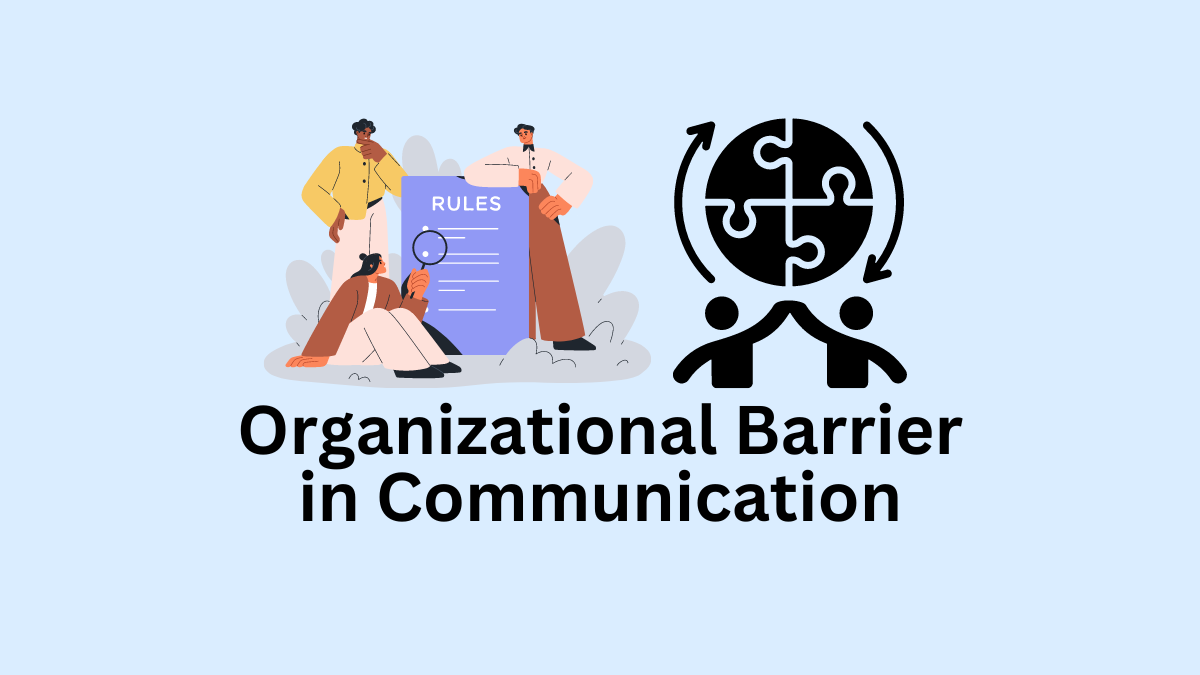What is Organizational Barrier in Communication?
Organizational barriers in communication encompass obstacles within a company that hinder the effective exchange of information, potentially leading to commercial setbacks.
These hurdles arise from structural, procedural, or cultural issues, impeding the flow of communication among employees. Examples include rigid organizational rules and hierarchical structures, which may discourage open dialogue, and inadequate communication facilities.
Additionally, factors like complex organizational hierarchies and cultural differences can exacerbate these barriers. Overcoming organizational barriers necessitates fostering a culture of open communication, implementing transparent evaluation processes, and providing necessary communication tools and training.
By addressing these challenges, organizations can cultivate an environment conducive to efficient communication, thereby enhancing productivity and overall performance.
Causes of Organizational Barriers
Below are the eight common reasons that produce organizational barriers in communication in the workplace:
Organizational Rules and Policies
Companies often establish rules dictating the format, medium, and channels for communication. These strict guidelines may deter employees from conveying messages, leading to delays in decision-making and transmission.
Status or Hierarchical Positions
Organizational hierarchies create formal communication channels, inhibiting free interaction between different levels of employees. Lower-level staff may feel reluctant to communicate with superiors due to fear of making mistakes or overstepping boundaries.
Organizational Facilities
Adequate communication facilities such as telephones and translators facilitate timely and accurate information exchange. In their absence, communication may be hampered, affecting productivity and efficiency.
Complex Organizational Structure
Organizations with multiple management levels experience delayed communication as messages pass through various layers. This complexity can lead to distortion or misinterpretation of information before reaching the intended recipients.
Read More: What is Communication Process?
Cultural Differences
Diverse workplaces may encounter communication barriers due to differing cultural backgrounds. Misunderstandings may arise if cultural cues and norms are not understood or respected, necessitating cultural awareness training and fostering an inclusive environment.
Decision-Making Barriers
Poor communication among managers can hinder decision-making processes, affecting goal achievement and organizational performance. Addressing these barriers requires ensuring employees possess the necessary knowledge and experience to make informed decisions.
Insecurity Within Teams
A lack of confidence or trust within a team can inhibit open communication. Employees may hesitate to voice their opinions or concerns, fearing judgment or repercussions. Building a culture of psychological safety is essential to encourage employees to communicate freely and contribute effectively to the organization.
Read More: 10 Objectives of Communication
Remote Working Barriers
The shift to remote work, accelerated by the pandemic, has introduced new challenges to communication. Issues such as difficulty in listening during virtual meetings decreased concentration due to excessive screen time, and the absence of face-to-face interaction can impede effective communication.
Organizations need to address these barriers by implementing strategies to facilitate clear and efficient communication in remote work environments.
Strategies To Overcome Organizational Barriers To Communication
Organizational barriers can hamper the communication flow in the workplace. Below are the five you can employ to overcome organizational barriers to communication.
Create a Culture of Listening
Foster an environment where every employee feels valued and heard. Encourage active listening and respectful communication among team members. Providing training on effective listening skills can help improve interpersonal communication and break down barriers caused by misunderstandings or misinterpretations.
Establish Open and Transparent Evaluation
Promote a culture where employees feel safe to express their ideas and concerns without fear of reprisal. Implement clear performance appraisal criteria and ensure that feedback is constructive and supportive. This transparency builds trust and encourages open communication, reducing barriers caused by insecurity or reluctance to speak up.
Read More: Eight Steps in the Staffing Process
Make Communication a Necessity
Emphasize the importance of communication as a fundamental aspect of organizational success. Encourage regular communication channels and provide opportunities for employees to engage with each other. Whether through meetings, forums, or digital platforms, facilitating communication ensures that information flows freely and barriers are minimized.
Implement Systems
Introduce tools and systems that streamline communication processes and facilitate collaboration. Project management solutions, feedback mechanisms, and communication platforms can enhance information sharing and decision-making. By providing employees with the necessary resources, organizations can overcome barriers related to inadequate communication infrastructure or inefficient processes.
Unite the Vision
Align employees with the organization’s mission, values, and goals to create a shared sense of purpose. A cohesive organizational culture fosters a common understanding and promotes communication across different levels and departments. When everyone is working towards a common vision, communication barriers arising from conflicting priorities or lack of alignment are reduced, facilitating smoother interactions and collaboration.
Read Next: Organizing in Management

Sujan Chaudhary holds a Bachelor in Business Administration (BBA) degree and is currently pursuing an MBA degree. He loves to share his business knowledge with the rest of the world.
